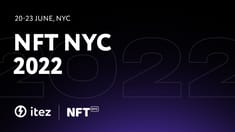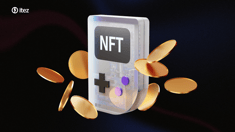
Automated trading is transforming finance, offering speed and precision that reshape how traders navigate stocks, forex, and cryptocurrencies in 2025.
In this new comprehensive guide by the itez team, you’ll discover what automated trading is, how it works, its key features, popular platforms, strategies, and future trends. Whether you’re a beginner or a seasoned trader, this guide breaks down the essentials to help you trade smarter.
Introduction to Automated Trading
Definition and Overview
Automated trading, often called algo-trading or algorithmic trading, is the use of computer programs to execute trades in financial markets. These programs follow predefined rules, or algorithms, to buy or sell assets like stocks, forex, or cryptocurrencies. Unlike manual trading, where a person makes every decision, automated trading systems operate without constant human input. They analyze market data, spot opportunities, and execute trades in seconds.
The concept isn’t new. It began in the 1970s with basic rule-based systems. But today, with powerful computers and advanced software, automated trading has become a cornerstone of modern finance. From individual crypto traders to massive hedge funds, people use these systems to navigate complex markets efficiently.
Importance in Modern Trading
Why does automated trading matter? Speed and precision. Markets move fast — prices can change in milliseconds. Humans can’t react that quickly, but computers can. Automated systems ensure trades happen at the right moment, maximizing profits or minimizing losses. They also remove emotional bias. Fear or greed often clouds human judgment, leading to poor decisions. Algorithms stick to the plan, no matter what.
In 2025, automated trading is everywhere. It dominates stock exchanges, where high-frequency trading firms execute millions of trades daily. In cryptocurrency markets, where volatility is high, traders rely on automation to seize fleeting opportunities. For retail traders, affordable platforms have made algo-trading accessible, leveling the playing field.
How Automated Trading Works
Trading Algorithms
At the heart of automated trading is the algorithm—a set of instructions that dictates when to trade. Think of it as a recipe: if certain conditions are met (like a price dropping below a threshold), the system acts (buys or sells). Algorithms can be simple, like following a moving average, or complex, analyzing dozens of data points.
Developers create these algorithms using programming languages like Python or C++. Traders can also use pre-built algorithms on platforms, tweaking them to fit their goals. The algorithm’s job is to scan markets, identify patterns, and act without hesitation.
Execution Speed and Efficiency
Speed is everything in automated trading. Systems can process vast amounts of data—price feeds, news, volume—in real time. They execute trades in microseconds, far faster than any human. This efficiency reduces “slippage,” where prices change between deciding to trade and the trade happening.
High-frequency trading (HFT) takes this to the extreme. HFT firms use supercomputers and low-latency networks to profit from tiny price differences. While HFT is mostly for big players, retail traders benefit from similar tech in platforms designed for everyday use.
Role of AI and Machine Learning
Artificial intelligence (AI) and machine learning (ML) have supercharged automated trading. Traditional algorithms follow fixed rules. AI-powered systems learn from data, adapting to new market conditions. For example, an AI might notice a pattern—like a crypto surging after a specific tweet—and adjust its strategy.
Machine learning models analyze historical data to predict price movements. They can handle unstructured data, like social media sentiment or news headlines, giving traders an edge. In crypto markets, where hype on platforms like X can spike prices, AI’s ability to process real-time chatter is a game-changer.
Popular Automated Trading Platforms
TechTrader is a trading robot that analyzes market movements and provides traders with trading signals.
Screenshot of the TechTrader platform
The project, launched in 2001, was created by Harry Boxer, a trader with over 50 years of experience. The platform focuses on analyzing traditional financial instruments.
TrendSpider is a machine learning-based trading bot that assists in conducting real-time technical analysis of selected instruments. The project entered the market in 2017.
Screenshot of the TrendSpider platform
The trading bot can be used to identify promising patterns for profiting from stocks, derivatives, and cryptocurrencies. When working with digital assets, the AI analyzes data from 150 crypto exchanges.
TrendSpider offers a mobile app for Android and iOS.
Cryptohopper is always connected to the internet. This approach allows the program to analyze all signals to deliver effective results.
Screenshot of the Cryptohopper platform
Within Cryptohopper, users can utilize built-in trading programs or customize the bot to match their trading style.
How to Choose a Trading Bot
There is no one-size-fits-all solution. Online, you can find both positive and negative reviews about every cryptocurrency trading bot available on the market. The only way to select the best trading bot is to personally test all the available options.
Benefits and Risks of Automated Trading
Market participants highlight several advantages and disadvantages of using trading bots. The benefits of such programs include the following points:
- Trading can be automated.
- A trading bot is a tool that frees up significant time without sacrificing work efficiency.
- A cryptocurrency trading bot can be customized to match your trading style.
- A crypto bot allows simultaneous trading on multiple digital asset exchanges and across various trading pairs.
- Trading automation reduces the risk of missing profitable opportunities.
- Bots lack emotions, and eliminating this factor can improve performance efficiency.
The disadvantages of trading bots include the following points:
- Trading bots do not guarantee profitability.
- If a trading bot is configured incorrectly, its operations may lead to losses.
- Despite high automation, trading bots still require periodic monitoring.
Common Automated Trading Strategies
Trend Following. Trend-following strategies ride market waves. If Bitcoin’s price is climbing, the system buys, expecting the trend to continue. It uses indicators like moving averages to confirm direction. This works well in strong bull or bear markets but struggles in choppy, sideways conditions.
Arbitrage. Arbitrage exploits price differences across exchanges. For example, if Ethereum is $2,500 on Binance but $2,510 on Kraken, the system buys low and sells high. Crypto’s fragmented markets make arbitrage popular, but it requires fast execution and low fees to be profitable.
Mean Reversion. Mean reversion assumes prices return to their average. If a coin spikes far above its typical range, the system sells, expecting a drop. It’s effective in stable markets but risky during strong trends, where prices can stay “extreme” longer than expected.
Momentum Trading. Momentum strategies jump on fast-moving prices. If a coin surges with high volume, the system buys, betting the momentum continues. It’s common in crypto, where news or tweets can trigger rapid rallies. Timing is key—entering or exiting too late can lead to losses.
Conclusion
Automated trading blends speed, logic, and AI to execute trades with precision across stocks, forex, and crypto. Platforms like MetaTrader and Cryptohopper offer accessible tools, while strategies like arbitrage and trend following cater to diverse markets. Despite risks like tech glitches, automation empowers traders to stay competitive.
Automated trading isn’t foolproof, but it’s a powerful ally in today’s fast-paced markets. Start small, test strategies, and stay vigilant to unlock its potential.
🤔 Do you want to try automated trading? Share your views in our socials!
💌 Telegram, Twitter, Instagram, Facebook
Here are three other cool articles:
Top 5 Cryptocurrencies in 2024
Top 5 Crypto Events That Shaped the Market Momentum in 2024
This article is not investment advice or a recommendation to purchase any specific product or service. The financial transactions mentioned in the article are not a guide to action. It’s not intended to constitute a comprehensive statement of all possible risks. You should independently conduct an analysis on the basis of which it will be possible to draw conclusions and make decisions about making any operations with cryptocurrency.








